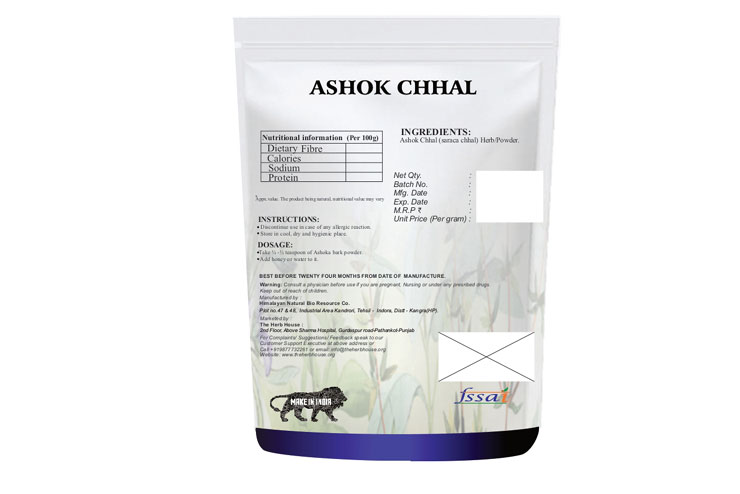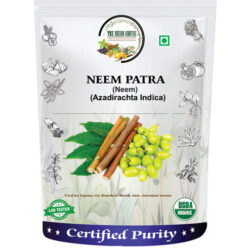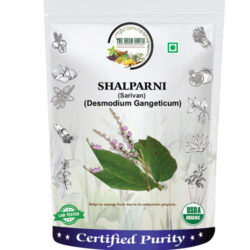Description
The ashoka is a rain-forest tree. Its original distribution was in the central areas of the Deccan plateau, as well as the middle section of the Western Ghats in the western coastal zone of the Indian subcontinent.
The ashoka is prized for its beautiful foliage and fragrant flowers. It is a handsome, small, erect evergreen tree, with deep green leaves growing in dense clusters.
Its flowering season is around February to April. The ashoka flowers come in heavy, lush bunches. They are bright orange-yellow in color, turning red before wilting. As a wild tree, the ashoka is a vulnerable species. It is becoming rarer in its natural habitat, but isolated wild ashoka trees are still to be found in the foothills of the central and eastern Himalayas, in scattered locations of the northern plains of India as well as on the west coast of the subcontinent near Mumbai. There are a few varieties of the ashoka tree. One variety is larger and highly spreading. The columnar varieties are common in cultivation.
General Information
The ashoka tree is considered sacred throughout the Indian subcontinent, especially in India, Nepal and Sri Lanka. This tree has many folklorical, religious and literary associations in the region. Highly valued as well for its handsome appearance and the color and abundance of its flowers, the ashoka tree is often found in royal palace compounds and gardens as well as close to temples throughout India. It is believed Shakyamuni Buddha was born under an ashoka tree in Lumbini Garden. The ashoka tree is closely associated with the yakshi mythological beings. One of the recurring elements in Indian art, often found at gates of Buddhist and Hindu temples, is the sculpture of a yakshini with her foot on the trunk and her hands holding the branch of a flowering ashoka tree. As an artistic element, often the tree and the yakshi are subject to heavy stylization. Some authors hold that the young girl at the foot of this tree is based on an ancient tree deity related to fertility. Yakshis under the ashoka tree were also important in early Buddhist monuments as a decorative element and are found in many ancient Buddhist archaeological sites. With the passing of the centuries the yakshi under the ashoka tree became a standard decorative element of Hindu Indian sculpture and was integrated into Indian temple architecture as salabhanjika, because there is often a confusion between the ashoka tree and the sal tree (Shorea robusta) in the ancient literature of the Indian subcontinent.
Active Ingredients of Ashoka
The chemical constituents reported from Ashoka belong to different classes such as tannins, flavonoids, phytosterols, alkanes, esters, anthocyanin pigments, fatty acids and carbohydrates.
Synonyms
- English Name : Asok Tree
- Sanskrit Name : Kankeli
- Hindi Name : Ashoka
- Bengali Name : Ashoka
- Kannada Name : Ashokadamara, Ashokamara, Kankalimara
- Tamil Name : Asogam, Asogu, Asokam
- Telugu Name : Ashokapatta
Classification of Ashoka
- Kingdom : Plantae
- Phyllum : Magnoliophyta
- Class : Magnoliopsida
- Order : Fabales
- Family:Caesalpiniaceae
- Genus : Saraca
- Species : Saraca asoca
Habitat of Ashoka
Saraca Indica is grown all over India. It occur upto the altitudes 600 metres. It is cultivated in many gardens because of its decorative orange red flowers and evergreen beautiful foliage.
Uses & Effectiveness
Since the dawn of civilization, natural resources have remained the mainstay of various remedial approaches of humans vis-a-vis a large number of illnesses. Saraca asoca (Roxb.) de Wilde (Saraca indica L.) belonging to the family Caesalpiniaceae has been regarded as a universal panacea in old Indian Ayurvedic texts and has especially been used to manage gynaecological complications and infections besides treating haemmorhagic dysentery, uterine pain, bacterial infections, skin problems, tumours, worm infestations, cardiac and circulatory problems. Almost all parts of the plant are considered pharmacologically valuable. Extensive folkloric practices and ethnobotanical applications of this plant have even lead to the availability of several commercial S. asoca formulations recommended for different indications though adulteration of these remains a pressing concern.
Effect on Doshas
Pacifies Kapha and Pitta
Parts Used
- Leaves
- Flowers
- Bark
Ayurvedic Properties
| Hindi | Sanskrit | English | |
| Rasa | Kashaya | Taste | Astringent, Bitter |
| Veerya | Sheet | Potency | Cold |
| Vipaka | Katu | Post-digestive effect | Pungent |
| Guna | Laghu | Characteristics | Light, Dryness |
Side Effects of Ashoka
Although the use of this ashoka is highly beneficial, the following side effects may be noted, if remedies are not used precisely:
- Menstrual disturbances if women affected by amenorrhoea or infrequent menstruation are making the use of ashoka.
- Stomach pain and digestive issues if any parts of the tree are utilised orally.
- The safety profile of this tree is not clear for pregnant women. It is thus recommended to prevent the use of ashoka in pregnancy.
- Some studies have reported toxicological effects while using Ashok bark. It is thus advisable to always use any remedies utilising this tree under the supervision of your doctor and never consume orally. It is also important that you choose the correct variety of this tree as identical adulterant species are also commonly found.








Reviews
There are no reviews yet.